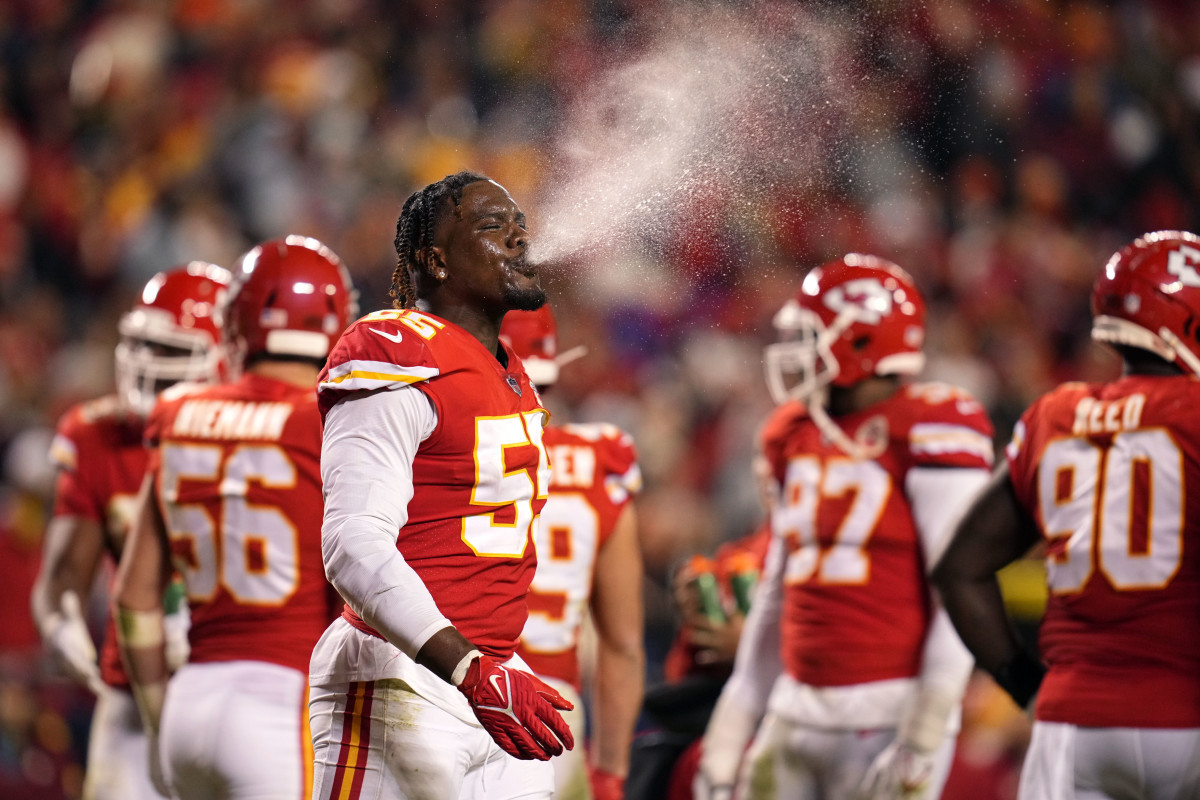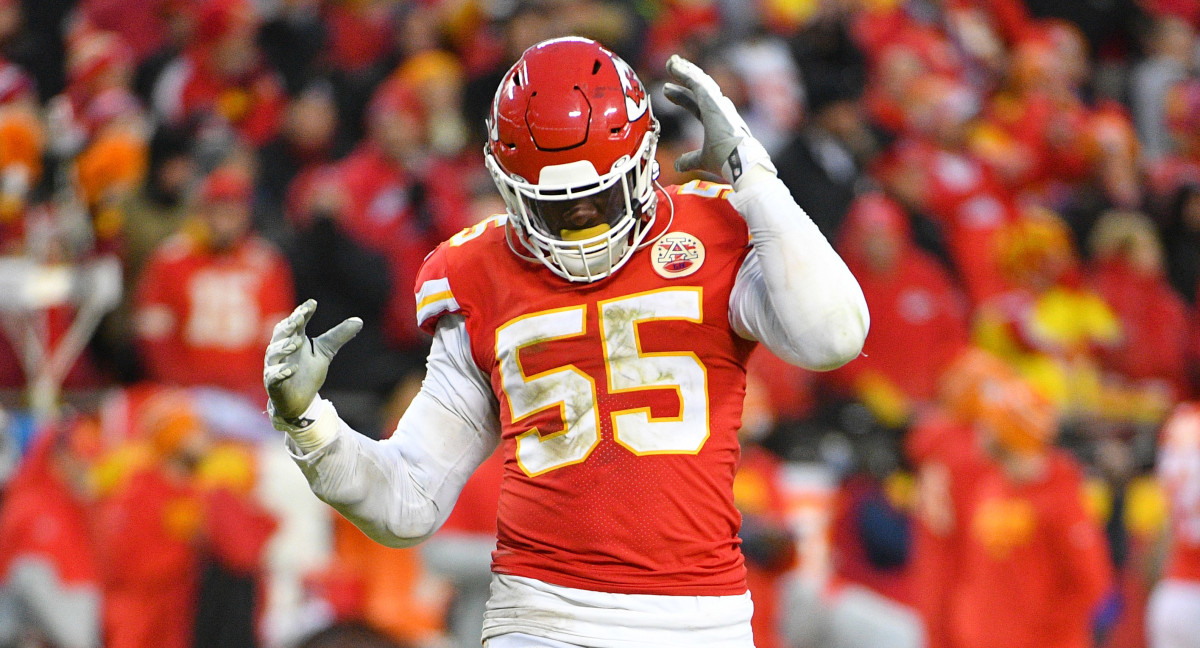Assessing How the Chiefs Can Keep Frank Clark
Kansas City Chiefs general manager Brett Veach had an interesting comment when talking about Frank Clark’s future with the team.
Chiefs GM Brett Veach on Frank Clark and his $26.3 million cap number for 2022.
— Matt Derrick (@mattderrick) March 1, 2022
"That's certainly a high number and we'll have to work on that, and do a lot of work on that if he were to stay here ... it may be a long shot but it's not impossible."
It had been all but a foregone conclusion that Clark would be released by the Chiefs this offseason in one way or another, whether that was with a standard release or a June 1 release. Veach’s comments open the door for another option, though — an option that sees Clark in a Chiefs uniform in 2022. Why would this happen? It's because both the Chiefs and Clark have a reason for him to be back in 2022 strictly due to his contract.

The main driver of why the Chiefs would not just release Clark is the $13.6 million remaining dead cap that is prorated bonuses on the last two years of his contract. This prorated bonus money is from Clark’s signing bonus when he signed the contract, along with a contract restructure a few years ago. This dead money is on the books now in the form of two charges of $6.8M this year and next year.
With a normal release, the Chiefs would save $12.7M in salary cap and eat the full $13.6M in dead cap this season. That's not a great ratio of savings to dead cap.
With a June 1 designation, though, the Chiefs would save $19.8M in salary cap and eat $6.8M in dead money this season, with another $6.8M next season. That sounds like a much better proposition, no? With that said, there is a reason this option is not as ideal. If Clark was designated a June 1 cut, the Chiefs would not get the salary cap space until exactly then: June 1. This is after free agency, after the draft and probably after the Chiefs would need the spending money.
So, with less-than-ideal release conditions for Clark, the case for a restructured contract comes in.
When the term “restructure” is thrown around this time of the year, 95% of the time it means one thing: a simple restructure. This simple restructure is taking the base salary or roster bonus of a player’s contract in the current year and turning it into a signing bonus, spreading that money over the remaining years left on the contract. It’s a simple, yet effective, way to create salary cap space.

Using “restructure” in reference to Clark’s contract is the other 5% of uses of the term. It means a contract rewrite, and ultimately a pay cut for Clark. Why would Clark agree to this pay cut, you may ask? He has a $19M, nonguaranteed base salary in 2022.
Clark would not see a dime of that base salary this year if he is cut. He knows that and the Chiefs know that. That fact is the reason why a pay cut can work. If the Chiefs come to Clark and offer to give him somewhere around half of that money, and he's fine with that, then the contract math starts to make sense.
Remember, both ways Clark can be released are not ideal for the Chiefs. The Chiefs either get delayed salary cap room to the tune of $19.8M or create $12.7M of instant salary cap room with a substantial amount of dead salary cap in those scenarios.
If the Chiefs void Clark’s 2023 contract year, lower his base salary this year to $6M and give him a $4 million signing bonus, Clark’s contract becomes a one-year deal. The value would be worth $15.3M with a void year in 2023 accounting for $8.8 million in dead money. For the Chiefs, this is a great outcome. They generate $11M in salary cap space immediately for this year (compared to the $12.7M from a straight-up cut), have a mostly manageable dead cap charge in 2023 and actually have Clark under contract for 2022.
In turn, Clark retains $10M of the money he would lose if he was cut, is now on a one-year deal and can try to play for a better contract next offseason. He's also earning more money than he would probably earn if he hit the open market this year. It's a win-win restructure.
Why would this not happen?
One reason this may not work does not deal with Clark’s deal - it pertains to his upcoming trial. His contract is already something that is hard to work around and his trial makes things much more complicated. Without knowing more about the circumstances of the trial and what it could mean for Clark’s availability next year, it's hard to postulate what it means for 2022 and beyond.
On the contract side of Clark’s situation, many players prefer to always hit the open market because they think highly of what they bring to the table. Clark could think he can get more than $10M in guaranteed money on the market that the example restructured contract gives him. Clark and Veach could also disagree on how low to go on the pay cut. For example, Clark could have a hard number around $13M while Veach eyes a number like $8M. Many players refuse to ever take a pay cut out of principle as well.
There are many reasons a contract restructure (more of a rewrite) like this would not work. The reasons for both sides to get a contract restructure done, though, are there. Veach is obviously considering it as well. At the end of the day, there is another option with Clark, and it very well could end with him being a Chief in 2022.

